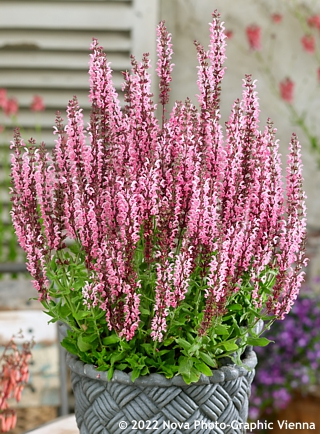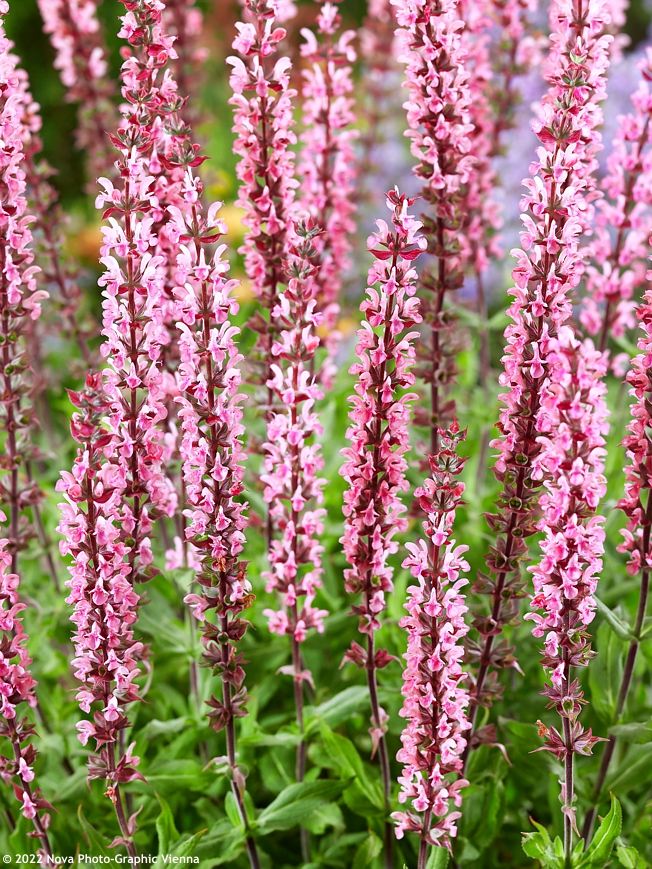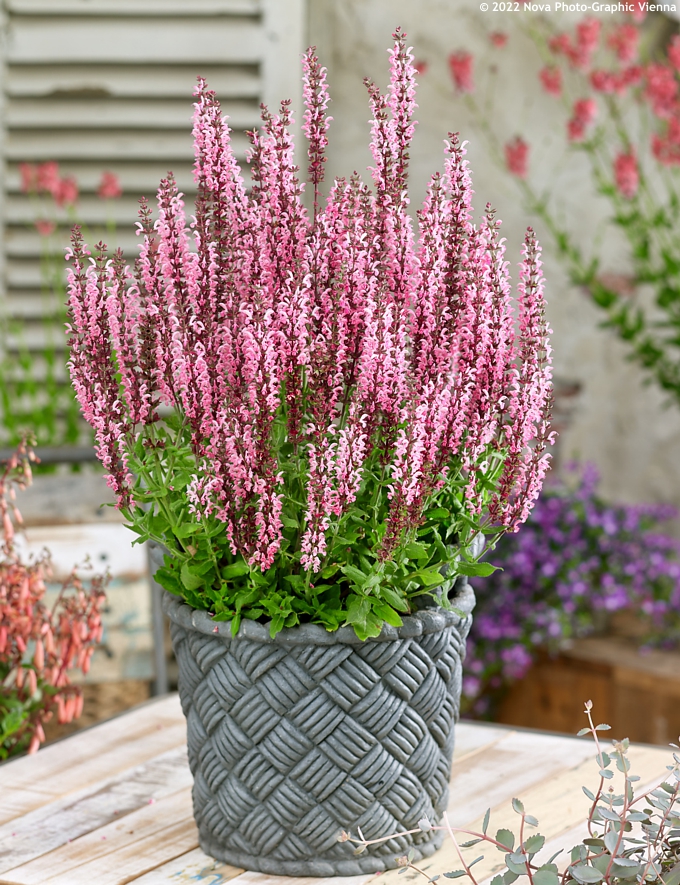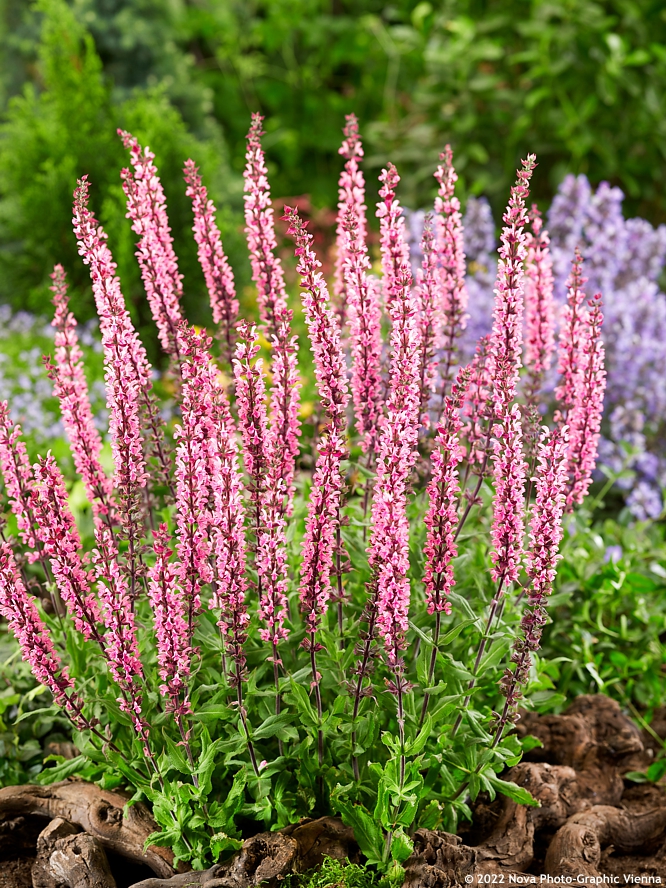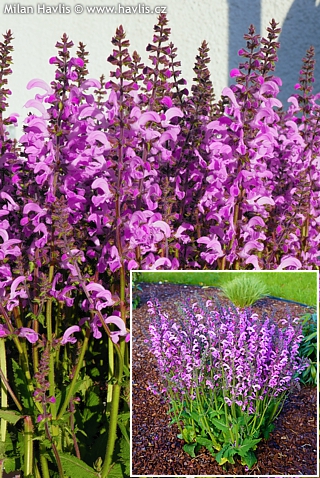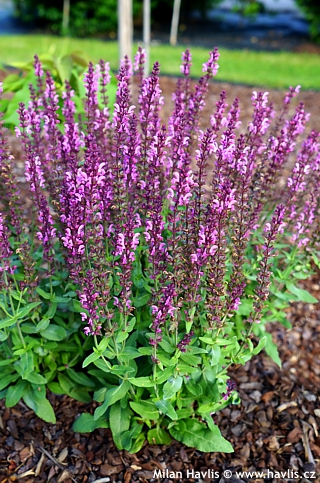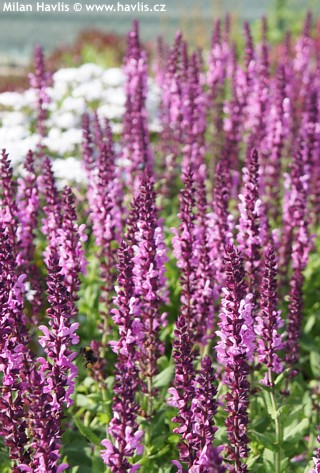Salvia nemorosa 'Tucarink' CARADONNA PINK INSPIRATION woodland sage
size/type
low perennial,low perennial
usual height
0,3-0,4m
usual width
0,3-0,5m
leaves
deciduous broadleaf
colour of leaves
flowers
showy
colour of flowers
blooming time
May-September
location
full to partial sun
soil type
any (acidic to alkaline)
soil moisture requirements
evenly moist (dislikes drought)
winter protection
for zone 5+6

for zone 7

categorized
Salvia
Salvia is a large genus containing about 900 species. In our climate mostly common (evergreen) sage is grown for culinary uses and in our woodlands you can come across a few herbaceous botanical species. Also, very popular are those of subtropical origin that are grown here as annuals with long flowering season. We prefer to aim at herbaceous perennials which are not as widely cultivated as they would deserve because we believe that there are species, hybrids, and varieties suitable for every landscape.Description of the plant:
Caradonna sage belongs among the top perennial bestsellers all around Europe. In 2021 arrives its new sister, a chance seedling discovered by Jonathan J. Tuite in England and was named CARADONNA PINK INSPIRATION. It does not bear blue flowers but boasts charming rosy pink flowers attached to deep purple stems. They are around 40 cm tall and upright even after a heavy rain. The main flowering begins from late May and lasts for about 6 weeks, meanwhile new flowering stems are formed for weaker flowering in midsummer. If you cut the whole plant back to the ground after the first flowering phase and feed it a little, it will re-grow into a nice and bushy clump with plenty of long, flowering stems offering the same show in late summer. Otherwise, it requires no care whatsoever. Leaves are mid green, narrowly ovate, wrinkled, and softly hairy.
Wood sage and its hybrids will grow in almost any well-drained soil. For best results grow it in light, humus-rich, well-drained soil in full sun or light shade. It needs no fertilizing, only in very poor o compacted soils it will benefit from occasional feeding with a balanced fertilizer. In early spring remove all above-ground parts except for rosette of new or over-wintered, healthy leaves lying flat on the ground. It is perfectly hardy to about -34°C (USDA zone 4) and will grow in outdoor pots and troughs, too.
Last update 25-04-2022
QUICK PRICE OVERVIEW
CURRENTLY SOLD OUT
WANT TO TRY A SIMILAR PLANT?












